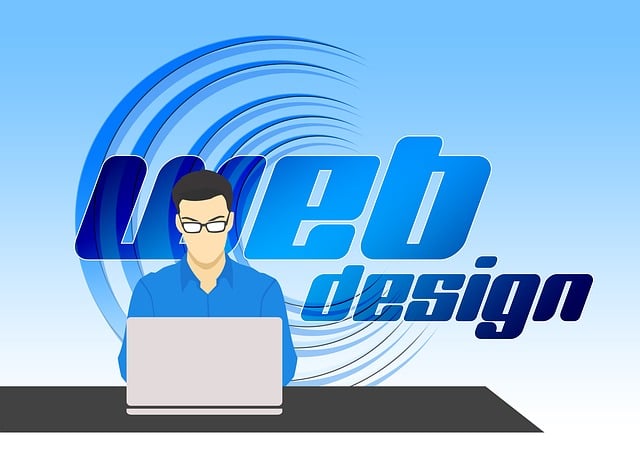Full-service web design offers a comprehensive solution for businesses aiming for online success, covering all aspects from brand understanding to graphics, content, and user experience optimization. This model is especially beneficial for startups and small enterprises, streamlining their process and allowing them to focus on core business activities. By combining strategic planning, innovative design, and efficient implementation, full-service web design creates professional, user-friendly websites that adhere to industry best practices, ultimately driving long-term online success. Key elements include user experience (UX) optimization, visual appeal aligned with branding, effective content strategy, and ongoing maintenance. Choosing a full-service provider brings diverse expertise, ensuring a streamlined process and high-quality outcomes while allowing companies to focus on their core strengths. The creative process transforms brand visions into captivating online presences, leveraging modern tools and tech-driven approaches for exceptional user experiences. Continuous measurement and optimization ensure long-term success and keep digital properties dynamic and effective.
In today’s digital landscape, a robust online presence is non-negotiable. Full-service web design offers a comprehensive solution, handling every aspect from conceptualization to launch and ongoing optimization. This article delves into the intricacies of full-service web design, exploring key components like strategic planning, creative branding, cutting-edge technology, and performance measurement. Discover how choosing a provider that encompasses these elements can elevate your website, ensuring it captivates users and drives business growth.
Understanding Full-Service Web Design: A Comprehensive Overview

Full-service web design encompasses a wide range of services that are essential for creating and maintaining a successful online presence. It goes beyond just designing visually appealing websites; it includes every aspect of developing and managing a website to ensure it meets its intended goals. This comprehensive approach involves understanding your brand, target audience, and business objectives before crafting tailored solutions. From initial concept creation to ongoing support, full-service web design considers all elements, including graphics, content, functionality, and user experience, to deliver an exceptional digital experience.
A key advantage of this model is its ability to streamline the process for businesses, especially startups or small enterprises, by providing a one-stop shop for their web development needs. It allows them to focus on their core competencies while experts handle the technical and creative aspects, ensuring a professional, user-friendly, and effective website that aligns with industry best practices. Ultimately, full-service web design is about fostering long-term online success through strategic planning, innovative design, and efficient implementation.
Key Components of a Successful Full-Service Web Design Approach

A full-service web design approach is a comprehensive strategy that involves every aspect of creating and maintaining a website, from initial concept to ongoing support. The key components of such an approach ensure a seamless digital experience for users and businesses alike. Firstly, user experience (UX) design is paramount; it focuses on intuitive navigation, responsive layout, and fast loading times, guaranteeing visitors can easily interact with the site.
Visual appeal and branding are also integral parts of full-service web design. A skilled designer will craft an aesthetic that aligns with a brand’s identity, using colour schemes, typography, and imagery to create a visually engaging and consistent online presence. Furthermore, content creation and strategy play a vital role in capturing the target audience’s attention. Well-optimised, relevant content enhances search engine rankings while providing value to visitors, fostering a stronger connection between the brand and its audience.
Benefits of Choosing a Full-Service Provider for Your Website

Choosing a full-service web design provider offers numerous advantages for businesses looking to create or revamp their online presence. These companies bring a wealth of expertise and specialized skills, ensuring a seamless and efficient process from concept to launch. With a single point of contact, clients can expect streamlined communication and coordination throughout the project.
Full-service providers handle every aspect of web design, including strategy, branding, UI/UX design, development, content creation, and ongoing maintenance. This comprehensive approach results in a more cohesive and user-friendly website that aligns with business goals. By outsourcing these tasks, businesses can focus on their core competencies while receiving expert guidance and high-quality deliverables.
The Creative Process: Building a Unique Online Identity

The creative process behind full-service web design is an art that transforms a brand’s vision into a captivating online presence. It all starts with understanding the client’s unique identity and goals, serving as the foundation for crafting a tailored digital experience. Through collaborative discussions and research, designers explore various concepts, ensuring each element resonates with the target audience. This involves everything from color schemes and typography to layout structures, all aimed at creating an aesthetically pleasing and user-friendly interface.
By combining creativity and technical expertise, web design professionals build a unique online identity that sets brands apart. They use innovative ideas and trends while staying true to the client’s brand essence, resulting in websites that are visually stunning and functionally efficient. The creative process is iterative, allowing for refinement and personalization until the desired outcome is achieved, ensuring a successful launch and a memorable digital impression.
Technology and Tools: Powering Your Website's Performance

In the realm of full-service web design, technology and tools play a pivotal role in shaping your website’s performance and user experience. Modern web designers leverage a diverse array of cutting-edge technologies to ensure sites are not only visually appealing but also lightning-fast, mobile-responsive, and secure. From content management systems (CMS) like WordPress and Shopify to robust coding languages such as HTML5, CSS3, and JavaScript, these elements form the backbone of dynamic and interactive websites.
Advanced tools and frameworks, including React, Angular, and Vue.js, enable developers to build complex interfaces with enhanced speed and efficiency. Additionally, integrated development environments (IDEs) like Visual Studio Code and Adobe XD streamline the design process, offering features for wireframing, prototyping, and code editing. These technologies collectively contribute to a seamless web design experience, ensuring your website not only looks great but also performs flawlessly across various devices and browsers.
Measurement and Optimization: Ensuring Long-Term Success

In the realm of full-service web design, Measurement and Optimization are key components ensuring long-term success. By implementing robust analytics tools, designers and developers can track user behavior, identify pain points, and gain valuable insights into how visitors interact with a website. These data-driven perspectives enable strategic adjustments to enhance user experience, boost engagement, and ultimately drive conversions.
Optimization strategies go beyond initial design and development. Regular updates, based on performance metrics and feedback loops, are essential to keep a web design relevant and competitive. Search engine optimization (SEO) techniques, integrated from the outset, further solidify a website’s online presence, making it more discoverable and accessible to target audiences. This ongoing refinement process is what distinguishes exceptional full-service web design, ensuring digital properties remain dynamic, effective, and aligned with evolving industry standards.
